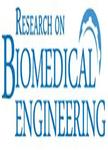版权所有:内蒙古大学图书馆 技术提供:维普资讯• 智图
内蒙古自治区呼和浩特市赛罕区大学西街235号 邮编: 010021

作者机构:Brazilian Air Force Academy PirassunungaSP Brazil Biomedical Engineering Program - COPPE Federal University of Rio de Janeiro Rio de JaneiroRJ Brazil
出 版 物:《Research on Biomedical Engineering》 (Res. Biomed. Eng.)
年 卷 期:2021年第37卷第2期
页 面:157-169页
核心收录:
基 金:The authors are thankful to the Brazilian agencies CNPq CAPES FINEP and FAPERJ for their financial support
摘 要:Purpose: The purpose of this study was to investigate the variation in the Young’s modulus (E) of bovine muscle samples as a function of temperature change generated by therapeutic ultrasound using ShearWave™ Elastography. Methods: Initially, the bovine muscle was heated via therapeutic ultrasound with a frequency of 3 MHz, nominal intensity of 2 W·cm−2, and application time of 2 min. Immediately following cessation of therapeutic irradiation, an E image was recorded and the stiffness was measured in circular area positioned at six depths (from 0.4 to 2.9 cm) in the center of the region of interest. Next, an E image was recorded every minute for the first 5 min. Over the next 30 min, an image was recorded every 5 min. Finally, an image was acquired 60 min after cessation of therapeutic irradiation. In the second test, the same experimental procedure was performed 60 min later with the physiotherapy equipment configured with a 10-min application time. Finally, during the ultrasonic irradiation of a new bovine muscle sample, the physiotherapeutic transducer was applied in a circular motion and with an angular velocity of 3.6 ± 0.3 rad·s−1. Results: In the first test, the bovine muscle E decreased from 212.2 ± 32.8 to 80.1 ± 13.8 kPa at 0.4-cm depth, as the temperature increased from 18.2 to 44.9 °C. This effect was reversed when the temperature decreased. In the second test, denaturation and cell death occurred, so an artifact appeared in the elastographic image and the ShearWave™ Elastography did not capture the E from the depth of 1.9 cm. Conclusion: We confirmed that it is possible to use ShearWave™ Elastography to investigate heat-induced changes in the elastic modulus of biological tissue. © 2021, Sociedade Brasileira de Engenharia Biomedica.